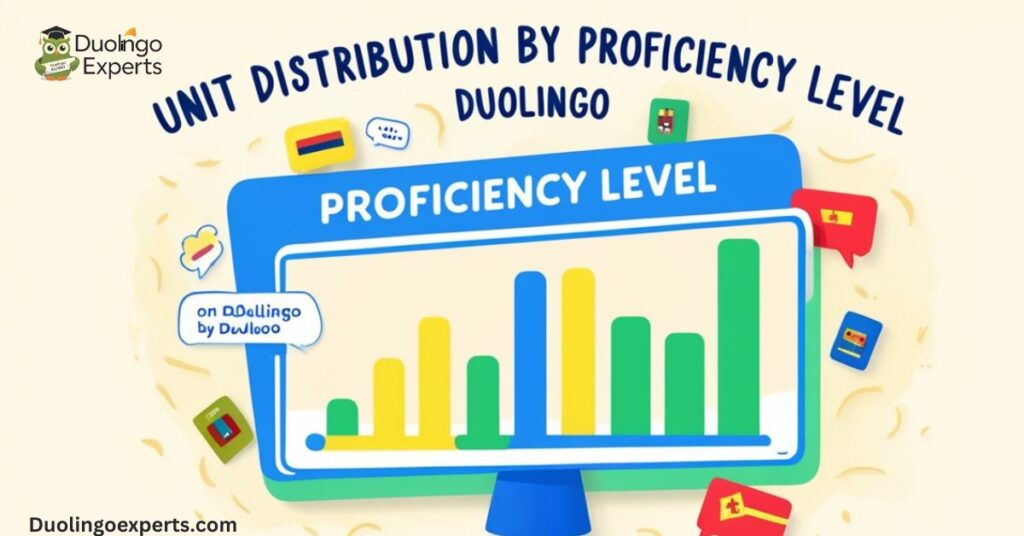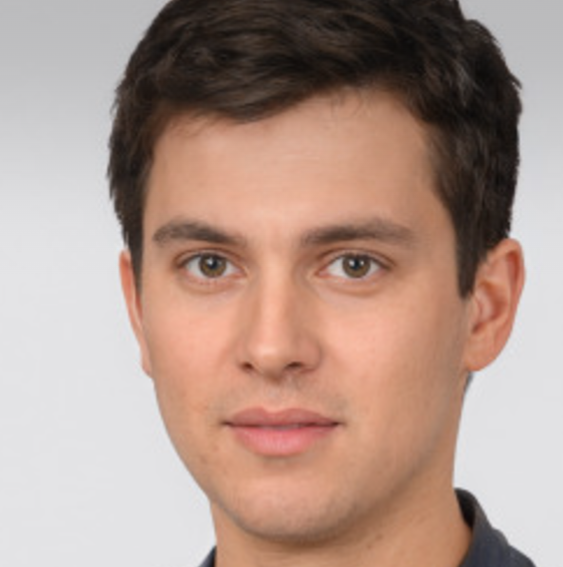Learning French is an exciting journey, and Duolingo has become one of the most popular language-learning apps to help people of all levels achieve proficiency in French. Whether you’re just starting out with basic French phrases or aiming to reach CEFR B2 proficiency, Duolingo offers a structured and effective way to progress through the language. But how many units does Duolingo French have? What exactly does each unit entail, and how much time will it take to complete the course?
In this post, we’ll provide a deep dive into the Duolingo French course, breaking down its structure, lesson distribution, and the time commitment needed to complete the program.
Key Takeaways
- Duolingo French course consists of 219 units, 1,921 levels, and 7,321 lessons.
- Divided into four sections: Rookie, Explorer, Traveler, and Trailblazer, each with increasing levels of difficulty.
- The total time investment to complete the course is approximately 34 hours, equivalent to one semester of college language classes.
- Each unit takes around 6.25 hours to complete, with daily lessons that take about 5 minutes each.
- Daily practice for at least 30 minutes is recommended to make faster progress.
Current French Course Layout on Duolingo

What Does the Duolingo French Course Look Like?
The Duolingo French course is structured around a skill tree. This skill tree divides the course into several levels that gradually introduce more complex concepts in French, from basic greetings to advanced grammar rules and cultural topics. This setup provides a visual representation of your progress as you work through various “units” or skill sets, each containing several lessons.
The course is designed to build incremental learning, meaning each lesson and unit builds on the previous one, helping you expand your vocabulary and understanding of grammar. As you progress, you unlock new units and gain access to more challenging topics, making the learning experience engaging and encouraging.
Key Features of the Duolingo French Layout:
- Spaced repetition: Duolingo uses an intelligent system to prompt you to review past material at optimal intervals, helping reinforce learning and long-term retention.
- Interactive lessons: Each lesson consists of varied exercises, including multiple-choice questions, sentence building, listening exercises, and speaking practice.
- Progress tracker: The Duolingo progress tracker keeps a record of your streaks and achievements, motivating you to stay consistent with your learning.
- Stories and practice: Duolingo also includes stories and exercises that give learners a real-world context to apply their knowledge, improving both vocabulary and conversational skills.
Course Sections Overview
Duolingo French is divided into four main sections: Rookie, Explorer, Traveler, and Trailblazer. Each section is geared towards different proficiency levels and has its own distinct set of learning objectives.
Rookie (9 Units)
The Rookie section is perfect for beginners. It focuses on basic French phrases, introductions, and simple sentence structure. These lessons are intended to establish the foundations of the language and provide essential vocabulary.
Key Topics Covered:
- Greetings (e.g., Bonjour, Salut)
- Numbers (1-10, 11-20, etc.)
- Basic phrases (e.g., “How are you?”, “Where is the bathroom?”)
- Present tense verb conjugations (e.g., être, avoir)
This section is crucial for building a strong foundation in French. You’ll learn how to introduce yourself, ask basic questions, and express simple thoughts.
Focus:
- Sentence structure: Learn to form simple sentences using subject-verb-object structures.
- Pronunciation: Basic practice with common French sounds and phrases.
By the end of this section, you’ll be able to engage in simple conversations and make your way through everyday French interactions.
Explorer (17 Units)
The Explorer section builds on the basics learned in Rookie, and it starts to introduce topics you’ll likely encounter in daily life. As a beginner, you’ll expand your vocabulary and start learning to communicate in slightly more complex contexts.
Key Topics Covered:
- Food and drink (e.g., fruits, meals, restaurants)
- Travel vocabulary (e.g., airports, transportation, hotel)
- Personal information (e.g., professions, hobbies, family members)
This section marks a transition from beginner to intermediate learning. By now, you’ll be getting more comfortable with using verbs in different contexts, while also learning to describe actions and objects with more detail.
Focus:
- Basic dialogues: Simple conversations related to everyday life (e.g., ordering food, booking a room).
- Building vocabulary: Expanding your ability to discuss familiar topics like food, family, and travel.
Traveler (16 Units)
As you enter the Traveler section, you’ll start to engage with slightly more advanced French grammar and conversational structures. This section introduces more complex verb tenses, which will help you express yourself with greater precision and variety.
Key Topics Covered:
- Free time activities (e.g., hobbies, sports, entertainment)
- Cooking and recipes (e.g., ingredients, cooking methods)
- Health and well-being (e.g., doctor visits, symptoms)
In Traveler, you’ll start dealing with more practical scenarios, like discussing your plans for the day, your favorite activities, and how to handle travel-related situations. The section continues to develop your confidence in handling real-world conversations.
Focus:
- More complex sentence structures: Mastering the use of different verb tenses.
- Cultural topics: Gaining insights into French culture through practical topics like cooking and leisure activities.
By the end of the Traveler section, you should be comfortable navigating most social situations, from discussing your health to ordering meals and sharing your interests.
Trailblazer (35 Units)
The Trailblazer section is where things get truly exciting. Here, you’ll encounter advanced French vocabulary, grammar, and cultural lessons that challenge your understanding and fluency. Topics in this section cover abstract concepts and delve deeper into French history, culture, and philosophy.
Key Topics Covered:
- Literature and philosophy (e.g., discussing famous French authors, understanding philosophical terms)
- Cultural exploration (e.g., historical events, traditions)
- Complex grammar structures (e.g., subjunctive mood, advanced prepositions)
The Trailblazer section truly prepares you for upper-intermediate fluency in French, and it pushes you to think critically about the language and its cultural significance.
Focus:
- Deepening fluency: Engaging with sophisticated ideas and more subtle language use.
- Idiomatic expressions: Learning to understand and use more nuanced French expressions.
- Critical thinking in French: Discussing complex subjects such as philosophy, politics, and literature.
By the end of this section, you’ll be able to understand advanced French texts, express nuanced opinions, and participate in complex conversations about a variety of topics.
Unit Distribution by Proficiency Level

The Duolingo French course divides the 219 units into different levels based on proficiency. Let’s break down how many units correspond to each CEFR proficiency level and what that means in terms of learning progress.
| Proficiency Level | Units | Total Units |
|---|---|---|
| Rookie (A1) | 9 | 9 |
| Explorer (A2) | 17 | 26 |
| Traveler (B1) | 16 | 42 |
| Trailblazer (B2) | 35 | 77 |
| Total | 219 | 219 |
Here’s a closer look at the units and what you can expect from each proficiency level:
A1 – Rookie: 9 Units
The A1 level is for absolute beginners. You’ll cover basic vocabulary and learn to communicate simple ideas, such as introducing yourself or ordering food.
A2 – Explorer: 17 Units
In the A2 level, you’ll expand your vocabulary and focus on more everyday situations, including travel, shopping, and dining.
B1 – Traveler: 16 Units
At the B1 level, you’ll delve deeper into more varied topics, such as health, free-time activities, and cooking. By this point, you’ll begin to handle more abstract concepts and express your opinions with increasing fluency.
B2 – Trailblazer: 35 Units
The B2 level prepares you for conversations involving complex ideas. You’ll explore advanced grammar structures, cultural topics, and literary discussions, rounding off your proficiency with advanced vocabulary and expressions.
Time Investment Per Unit Level
It’s essential to plan your study time when taking the Duolingo French course. As mentioned earlier, the average time to complete a unit is about 6.25 hours. Here’s an estimate of how long each section will take based on this timeframe:
| Section | Units | Total Time |
|---|---|---|
| Rookie | 9 | 56.25 hours |
| Explorer | 17 | 106.25 hours |
| Traveler | 16 | 100 hours |
| Trailblazer | 35 | 218.75 hours |
| Total | 219 | 481.25 hours |
As you progress, the time commitment per unit may vary slightly depending on the difficulty and the number of lessons. However, this breakdown gives you a general idea of the time involved.
Completion Timeframes
So, how long will it take to finish the Duolingo French course?
On average, completing the entire course can take anywhere from 6 months to a year, depending on how much time you dedicate each day. If you aim for faster progress, spending 30 minutes a day is recommended.
For long-term learners aiming for fluency or CEFR B2 proficiency, the process may take closer to a year. Here’s a rough estimate based on various daily practice levels:
| Practice Time Per Day | Completion Time |
|---|---|
| 5 minutes/day | 1 year |
| 15 minutes/day | 6-8 months |
| 30 minutes/day | 4-6 months |
| 60 minutes/day | 3-4 months |
Frequently Asked Questions
How many units are in the Duolingo French course?
The Duolingo French course consists of 219 units distributed across four sections: Rookie, Explorer, Traveler, and Trailblazer.
What is the structure of the Duolingo French course?
The course follows a skill tree structure, with each section focused on different proficiency levels and topics, starting from basic phrases and advancing to complex grammar and cultural discussions.
How long does it take to complete the Duolingo French course?
It takes about 6 months to a year to complete the course, depending on how much time you spend studying each day. The course is equivalent to one semester of college language classes.
How many units are in Duolingo French section 3?
Duolingo French Section 3, part of the Explorer level, contains 17 units. These units focus on everyday topics like food, travel, and personal information.
How many units are in Duolingo French section 5?
Duolingo French Section 5, part of the Traveler level, includes 16 units. This section covers topics like free time, cooking, and health-related vocabulary.
How many units are in Duolingo French B2?
Duolingo French B2 level is covered in the Trailblazer section, which contains 35 units. This section focuses on advanced grammar, literature, and cultural topics.
How many levels in Duolingo French?
Duolingo French has a total of 1,921 levels spread across 219 units. These levels are designed to guide learners from beginner to advanced proficiency.
How many units are in Duolingo French?
The Duolingo French course contains a total of 219 units. These units are spread across different levels, ranging from basic phrases to advanced grammar and cultural topics.
How long does it take to complete Duolingo French?
Completing the Duolingo French course typically takes around 34 hours, equivalent to one semester of university language learning. However, the time required can vary depending on your study pace and consistency.
What level of French is Duolingo equivalent to?
Duolingo French takes learners up to a CEFR B2 level. This level signifies an upper-intermediate proficiency, allowing you to engage in more complex conversations and understand a wide range of topics.
Conclusion
The Duolingo French course offers a comprehensive and engaging learning experience for anyone who wants to master the French language. With 219 units, covering basic phrases to advanced conversations, learners can progress at their own pace, building a strong foundation in grammar, vocabulary, and French culture. Whether you’re aiming for basic communication skills or full fluency, Duolingo provides the tools, structure, and guidance you need to succeed.
By understanding how many units are in Duolingo French, how the sections are structured, and how much time you should allocate, you’ll be better equipped to achieve your language goals.
>>>Read Also: How to Get Gems in Duolingo for Free: Top Secret Hacks Revealed

DuolingoExperts, managed by MarkJohan, offers expert insights and tips for mastering languages. A tech-driven platform to enhance your learning experience.

